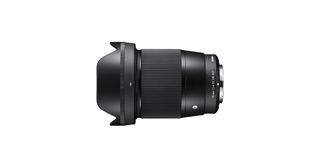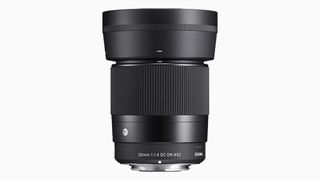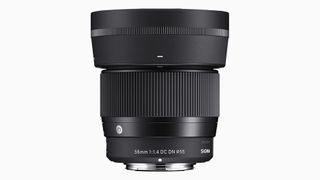Sigma’s new lenses for Nikon Z cameras are bad news for Canon
>
Sigma has announced its trio of existing and highly regarded DC DN Contemporary F1.4 primes; the 16mm F1.4, 30mm F1.4 and 56mm F1.4 are coming to the Nikon Z mount – and it’s another swipe at Canon’s seemingly closed RF mount system.
Already available in Sony E, Canon EF-M, Fujifilm X, Micro Four Thirds and L-mount, these will be Sigma’s first lenses for Nikon mirrorless cameras, designed for APS-C cameras such as the Nikon Zfc, Nikon Z30 and Nikon Z50.
Sigma shared a press release (opens in new tab) about his three new lenses where more details can be found.
There’s currently no launch date for these three new lenses, nor word on other possible Sigma-made Nikon Z lenses in the future – including full-frame offerings – although Sigma describes these DC DN Contemporary lenses as the ‘first’ to launch it. will make for the Nikon Z mount.
Sigma has a long history of providing excellent quality lenses at competitive prices, and the news should be music to the ears of Nikon APS-C system camera users for whom lens options are really quite limited.
As for price, again there’s no public information, although we can draw from existing prices of these lenses available in five other mounts to get a rough idea. Street prices for the lenses vary depending on the lens mount, but for the 16mm F1.4 are around £360 / $450 / AU$630; the 30mm F1.4 costs around £290 / $340 / AU$500, while the 56mm F1.4 costs around £380 / $475 / AU$670.
Analysis: Advantage Nikon for APS-C cameras
New APS-C lenses are great news for Nikon Zfc, Z30 and Z50 users. Currently there are only three Nikon-made autofocus zooms available in this format, the 16-50mm f/3.5-6.3 DX VR, 18-140mm f/3.5-6.3 DX VR and 50-250mm f/4.5-5.6 DX VR . and no primes.
Now there’s the prospect of three highly regarded, lightweight and compact autofocus primes. The crop factor of the APS-C sensor means the lenses have effective focal lengths of 24mm, 45mm and 85mm respectively.
That wide-angle lens of the trio is synonymous with landscape photography, while the other two are particularly popular with portrait photographers, especially with the maximum aperture of F1.4. It’s a tantalizing combination, especially with the stylish Nikon Zfc.
The news is also a blow to those who own or are interested in the Canon EOS R7, R10 and R50 cameras – Canon’s lineup of RF-mount mirrorless cameras, also with APS-C sensor.
Like Nikon, only three budget-level zooms are available for the R7, R10 and R50 cameras, yet Canon continues to block third-party lens makers, so the wait continues for new Canon RF lenses. Especially for a highly competent camera like the EOS R7, the limited choice of lenses is its Achilles’ heel, so for now it looks like Nikon has gained an edge over its historical rival.



